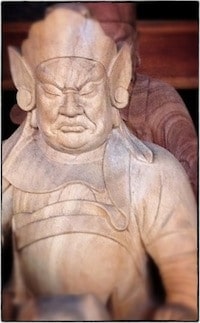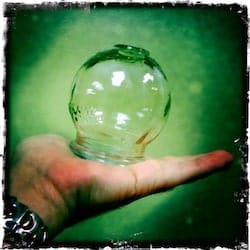We usually only think about pulled muscles, whip-snapped ligaments and damage to cervical disks when suffering the aftermath of a whiplash injury. An injury like this will shake you to your bones, and the resulting stiffness and soreness is an achingly poignant reminder of how a sudden impact translates into curious vectors and velocities as it rips through the bony and soft tissues of your body.
What we don’t often consider is how the fascia, also known as connective tissue, is also subject to injury in a whiplash situation. And we should, as it’s the net-like fabric that connects everything to everything else in the body.
 Connective tissue is interesting stuff. Kind of like the Plastic Man comic book superhero, fascia can be dense and rigid, or stretchy and elastic. Usually it has a solid enough tensegrity to “keep everything in place,” meaning it’s elastic enough to stretch and give as muscles lengthen and contract, while at the same time giving enough support to both firmly and gently hold our various anatomical structures in place.
Connective tissue is interesting stuff. Kind of like the Plastic Man comic book superhero, fascia can be dense and rigid, or stretchy and elastic. Usually it has a solid enough tensegrity to “keep everything in place,” meaning it’s elastic enough to stretch and give as muscles lengthen and contract, while at the same time giving enough support to both firmly and gently hold our various anatomical structures in place.
A shock of high-velocity energy running through the fascia of the neck, shoulders and upper back can completely disrupt its integrity, and this leads to hypertonic muscles and limited range of motion. It’s kind of like the shock waves of an earthquake moving through loose, sandy, rocky or waterlogged soil. The force of the shock momentarily liquefies what we usually experience as solid. And in that moment profound reconfigurations of structure can emerge and freeze. This is when buildings tilt askew or fall down, hillsides might disappear, sinkholes open up, or rivers change their course.
The connective tissue of the human body is not dissimilar. The whole system liquefies in the discombobulation of shock waves, and then it resets itself in line with the various forces that vectored their way through the body. This is why many people after a whiplash injury will not feel quite right, but have a hard time explaining in just what way things are not right.
What to do?
 Acupuncture — with its ability to drop the body into a deep feeling of repose and release — is a good way to allow the body to naturally work these frozen shock waves of energy out of the connective tissue. Additionally, it helps the body to enter the parasympathetic state, which removes adrenaline and cortisol from the system. In other words, acupuncture turns off the “fight or flight” response that gets trapped in the fascia.
Acupuncture — with its ability to drop the body into a deep feeling of repose and release — is a good way to allow the body to naturally work these frozen shock waves of energy out of the connective tissue. Additionally, it helps the body to enter the parasympathetic state, which removes adrenaline and cortisol from the system. In other words, acupuncture turns off the “fight or flight” response that gets trapped in the fascia.
The other way to literally iron these frozen shock waves out of the fascia is through the use of cupping. Not only does cupping mobilize the blood flow and decompress tight muscles, but also gently and thoroughly stretches the fascia, which allows it to return to its natural net-like tensegrity. It’s not unlike taking a hot iron to a pair of rumpled cotton pants.
Cupping feels great, and is a beneficial adjunct to any treatment that you are receiving for whiplash. Consider using cupping should you find yourself with a whiplash injury. Quite often, once the fascia is set right, everything else will naturally fall into place.
